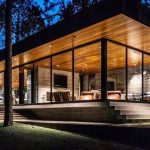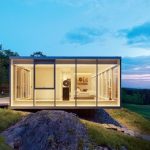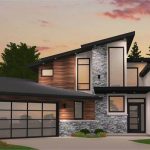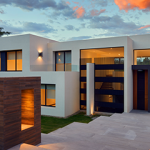As an Amazon Associate I earn from qualifying purchases.
Throughout history, the design and construction of homes have evolved significantly, reflecting changes in society, technology, and cultural influences. From ancient civilizations to the modern era, home architecture has continually adapted to meet the needs and preferences of its inhabitants.
In ancient Mesopotamia, homes were typically made of mudbrick with flat roofs, reflecting the hot climate of the region. This type of architecture was also used in ancient Egypt, where houses were arranged around central courtyards for privacy and protection from the elements.
During the Roman Empire, the wealthy built elaborate villas with multiple rooms, baths, and gardens, showcasing the importance of opulence and luxury in their homes. By contrast, the common people lived in cramped apartments called insulae, which were often poorly constructed and prone to collapse.
In the Middle Ages, castle and manor house architecture dominated Europe, with fortifications and defensive features designed to protect against invaders. These structures were often built with stone or timber, reflecting the wealth and power of the nobility who inhabited them.
By the Renaissance period, home architecture became more ornate and decorative, with elaborate facades, columns, and intricate detailing. Villas in Italy, such as the iconic Villa d’Este in Tivoli, exemplified the grandeur and elegance of this era.
The Industrial Revolution brought about dramatic changes in home architecture, as new materials and construction techniques revolutionized the building industry. The use of steel, glass, and concrete enabled architects to design taller, more efficient buildings, such as the skyscrapers that now dominate city skylines around the world.
In the 20th century, the modernist movement sought to simplify and streamline home design, emphasizing functionality, minimalism, and the use of new materials such as glass and steel. Architects like Le Corbusier and Frank Lloyd Wright revolutionized the way homes were built, focusing on clean lines, open floor plans, and integration with the natural environment.
Today, home architecture continues to evolve, with a growing emphasis on sustainability, energy efficiency, and innovative design. Green homes, passive solar designs, and smart technology are all becoming increasingly popular, reflecting a greater awareness of environmental concerns and the need for more sustainable living.
As we look to the future, home architecture will continue to adapt and change, incorporating new technologies, materials, and design trends to create homes that are both functional and beautiful. The evolution of home architecture is a reflection of our ever-changing world, and the ways in which we choose to live and interact with our surroundings.
Amazon and the Amazon logo are trademarks of Amazon.com, Inc, or its affiliates.
 yonohomedesign.com Garden and Interior Design Ideas
yonohomedesign.com Garden and Interior Design Ideas

















